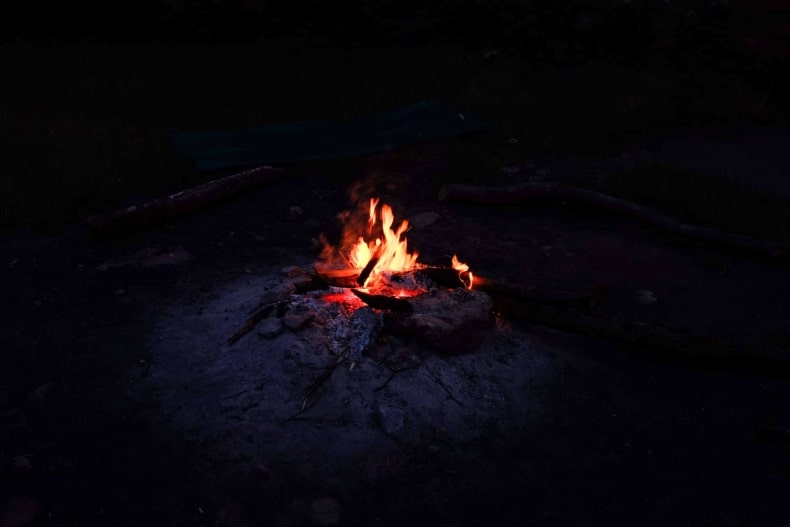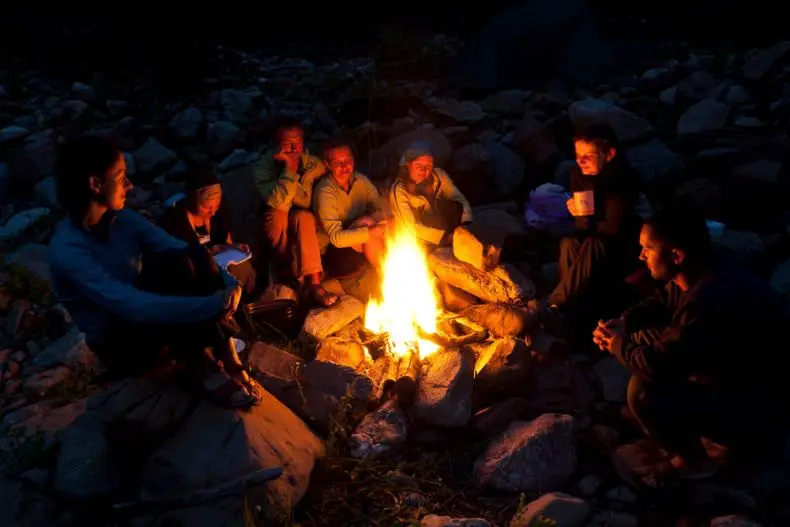When you go camping, a lot of things may cross your mind. In fact, it can be some weird questions about life, why we’re here, and stuff like that. Yet some might just wonder…how hot does a campfire get?
The average temperature just to start a campfire using wood will require heat of least 600 degrees Fahrenheit. The average temperature that a campfire gets is about 980 to 1,100 degrees Fahrenheit .
The precise answer to this question can vary, depending on the size of the fire and even what is used to create it. However, this is all determined by vapors inside your wood. It is what assists you in keeping the fire from reaching such a large temperature as quickly as it could. The gases and vapors will begin to release upon the point wood catches on fire. From here, you’re looking at a waiting game for them to completely go away.
Once they do, your campfire could get hotter. Considering the wood vapors and gases are gone, you only have ash and charcoal remaining. Therefore, you’re now capable of reaching higher temperatures.
How To Get Hotter Faster
Naturally, people might wonder what the best concept would be regarding how one might get a fire hotter even faster than normal. Usually, when you’re making a campfire you’ll likely use the wood around you and not those from home.
However, if you buy wood from a store for example…you’ll likely get something known as Heat-Treated Firewood. This along with things like Kiln Dried Wood are popular to take on camping trips in an effort to get a fire faster. They are usually also dry and light up faster as a result. This will help you dry out any wood that you collect that might be damp, cold, etc.
Yet if you are going to only use wood you find near your campsite, it might take a minute to get everything going. Your wood might not be completely able to light on fire initially. This is especially true when you’re in colder or humid environments. As it is dealing with things that will affect the wood. From liquid to fiber issues, it’s all possible.
However, if you’re in a place like California where you might see a lot of dry wood consistently…you’re going to be able to use it. The advantage here is that the wood you’re using might be completely dry, thus no longer dealing with major amounts of vapor or gas.
Meanwhile, you might also spot dead wood to use too. This wood will also no longer have vapors or gases coming out of it. You’ll only have to deal with elements that might have affected it honestly.
Thus, you’ll be able to get your fire hotter much faster with less to get in your way.
What Is The Hottest A Campfire Can Get?
Without the use of specialized environments or chemicals, you won’t be able to get your fire to incredibly hot temperatures. Somewhere near 1,000-degrees-Fahrenheit is hot enough, but can you get hotter than this? The quick answer is, yes!
However, not only will this take far more charcoal and ash…it’ll also take a larger fire. Basically, when fires are smaller or contained, they normally do not get as hot. There are many reasons for this, but the biggest is that there are often fewer materials to lite up.
Now compare that to a forest fire or a large bonfire you might see on a beach in old surfer movies. Those can get far hotter. Forest Fires aside, as they can get insanely hot to a point of no real averages being possible….a big bonfire can get really hot.
Usually, those reach anywhere between 1,800 to 2,200 degrees Fahrenheit. To give you an idea of how hot this can reach, consider what you can melt at such temperatures.
The melting point of aluminum is around 1,200 degrees, for silver it’s 1,783 degrees, for copper it’s 1,984 degrees, and for Bronze & Brass, it is just under 1,000 degrees.
When you can shape metals, precious or otherwise, you’re in the “incredibly hot” category.







